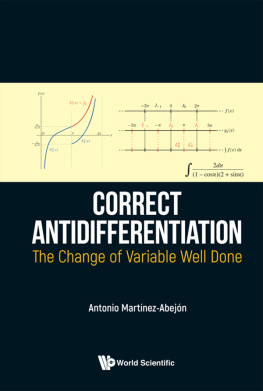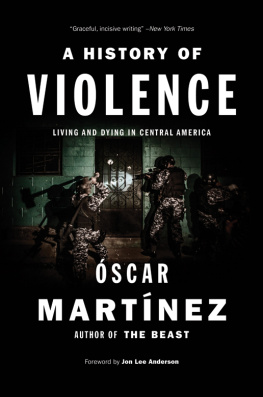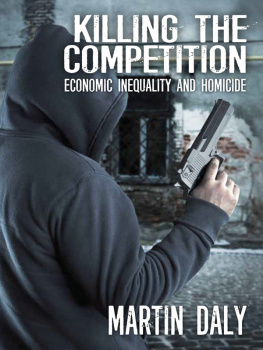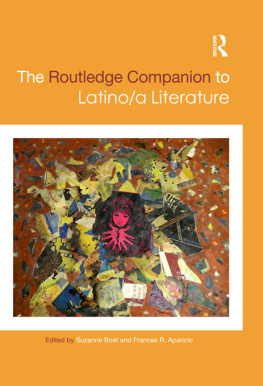Latino Homicide
Latino Homicide is the first empirically based but readable book for courses to counter the conventional wisdom that immigrant populations only contribute crime to their communities. For this second edition, Martinez further emphasizes his argument with updated data and the addition of a new city, San Antonio. With fascinating case studies from police reports and actual cases from six varied cities, Latino homicide rates are revealed to be markedly lower than one would expect, given the economic deprivation of these urban areas. Far from dangerous or criminal, these communities often have exceptionally strong social networks precisely because of their shared immigrant experiences. Martinez skillfully refutes negative stereotypes in a coherent and critically rigorous analysis of the issues.
Ramiro Martinez, Jr. is a professor in the School of Criminology and Criminal Justice and in the Department of Sociology and Anthropology at Northeastern University. Over the past fifteen years, Dr. Martinez has received several honors and awards. In 2011, he was a recipient of American Society of Criminology DPCCs Lifetime Achievement for outstanding scholarship in the area of race, crime, and justice. A native of San Antonio, Texas, he now resides in Boston, Massachusetts.
Criminal Justice Series
Forensic Mental Health
Mary McMurran, Najat Khalifa and Simon Gibbon
Crime Prevention
Nick Tilley
Probation
Working with offenders
Rob Canton
Titles of Related Interest
Todays White Collar Crime
Hank J. Brightman
White Collar Crime: Opportunity Perspectives
Michael Benson and Sally Simpson
Criminological Perspectives in Race and Crime, 2/e
Shaun Gabbidon
Corrections
Jeanne Stinchcomb
A Theory of African American Offending
James Unnever and Shaun Gabbidon
When Crime Appears: The Role of Emergence
Jean McGloin, Christopher Sullivan, and Leslie Kennedy
Voices from Criminal Justice
Heith Copes and Mark Pogrebin
Crime and the Life Course, 2/e
Michael Benson
Wrongful Convictions and Miscarriages of Justice
Edited by C. Ron Huffand Martin Killias
Human Trafficking: Interdisciplinary Perspectives
Edited by Mary C. Burke
Race, Law and American Society, 2/e: 1607 to Present
Gloria J. Browne-Marshall
Research Methods in Crime and Justice
Brian Withrow
Crime and Networks
Edited by Carlo Morselli
Wrongful Conviction and Criminal Justice Reform
Edited by Marvin Zalman and Julia Carrano
Questioning Capital Punishment: Law, Policy, and Practice
James R. Acker
Second edition published 2015
by Routledge
711 Third Avenue, New York, NY 10017
and by Routledge
2 Park Square, Milton Park, Abingdon, Oxon, OX14 4RN
Routledge is an imprint of the Taylor & Francis Group, an informa business
2015 Taylor & Francis
The right of Ramiro Martinez, Jr. to be identified as author of this work has been asserted by him in accordance with sections 77 and 78 of the Copyright, Designs and Patents Act 1988.
All rights reserved. No part of this book may be reprinted or reproduced or utilised in any form or by any electronic, mechanical, or other means, now known or hereafter invented, including photocopying and recording, or in any information storage or retrieval system, without permission in writing from the publishers.
Trademark Notice: Product or corporate names may be trademarks or registered trademarks, and are used only for identification and explanation without intent to infringe.
First edition published by Routledge 2002
Library of Congress Cataloging-in-Publication Data
Martinez, Ramiro, Jr. Latino homicide : immigration, violence, and
community / by Ramiro Martinez, Jr. Second edition.
pages cm. (Criminal justice series)
Includes bibliographical references and index.
1. HomicideUnited States Case studies. 2. Latin AmericansUnited States
Case studies. 3. Hispanic AmericansCase studies. 4. United States Emigration
and immigrationCase studies. I. Title.
HV6529.M37 2015
364.15208968073dc23
2014021749
ISBN: 978-0-415-53651-6 (hbk)
ISBN: 978-0-415-53653-0 (pbk)
ISBN: 978-1-315-77606-4 (ebk)
Typeset in Ehrhardt MT
by Apex CoVantage, LLC
I grew up in San Antonio, Texas, in the 1960s and 1970s. From 1968 to 1980 I went through the local school system with many of the same classmates in a neighborhood adjacent to John Jay High School. A couple of years later after attending junior college I went offto a local university and never moved back, but did return regularly. The neighborhoods were changing during those years but not as rapidly as in other places across urban America. Scholars would describe some of the changes elsewhere as the consequences of deindustrialization, the decline of segregation, growth of the underclass, white flight and other urban problems. My personal impression was far less complex. As a teenager I went to school with Whites, Blacks and Hispanics but noticed it was becoming more Mexican or Mexican American as I approached graduation. While I grew up in a racially diverse area I noticed that non-Latino Whites (Anglos) were leaving and being replaced by Hispanics or Latinos. The neighborhood was just over half White during my elementary school years but changing. By the time I went back for my twenty-year high school reunion the old neighborhood was almost completely Latino.
At the time I did not realize, much less comprehend that, for the most part, the Latinos moving in were not newcomers from abroad. Rather, they were from older areas in the surrounding West Side where my paternal grandmother resided or from neighboring rural places where my maternal grandmother had lived for much of her life. Some residents were retired military coming back home after serving abroad. The fact that they were not immigrants was not apparent to me at the time since the only thing I noticed about them was they were Latino. It was only years later as the Latino growth became more concentrated across the southwest and the population grew in urban communities that I recalled internal migration and fertility accounted for much of the urban population transformation in places such as San Antonio. The growth of Latinos is the main part of the story I want to tell here, but the visibility of native-born Latinos is another portion of that tale. And I contend that requires more elaboration and research. The questions that motivated this second edition come out of my personal and academic experiences. I wanted to impart the past and present story of homicide in the seventh largest city in the nationSan Antoniowhich happens to be my birthplace and now a majority Latino city.
I also wanted to go back and study the city of Miami, my former residence, workplace and research site for almost twenty years more closely. I wanted to revisit and expand the story of the immigration experienceone that is very strongly illustrated in Miami, Florida, and even a part of the illegality status debate that now rises in the public imagination. This is done by returning to a homicide story linked to a boatlift and boat wave over thirty years old. Many of my former students or their parents entered Miami this way, and I wanted to more fully embrace that story. I also wanted to update the border story since many U.S. residents base their opinions on incorrect notions of what crime on the border means or why border control is important when considering local crime. Many readers consider the U.S.-Mexican border a dangerous place, and I update the study by expanding the study of homicides in San Diego, California. In these two entry pointsMiami and San DiegoI also ask what was the Latino homicide level relative to other racial/ethnic/immigrant groups? In others words, how useful is it to study Latino homicides but have little understanding of the similarities and differences to groups that are heavily foreign-born? These two cities are in the areas most heavily affected by the new immigration. Yet the Latino homicide rate declined. Why?








